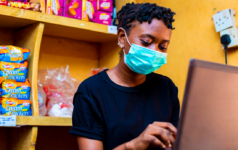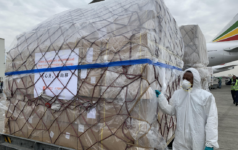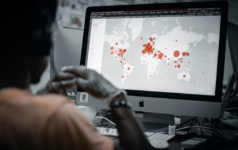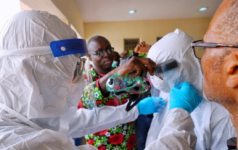Dalberg uses cookies and related technologies to improve the way the site functions. A cookie is a text file that is stored on your device. We use these text files for functionality such as to analyze our traffic or to personalize content. You can easily control how we use cookies on your device by adjusting the settings below, and you may also change those settings at any time by visiting our privacy policy page.
As COVID-19 continues its spread globally, so too does the scarcity of essential medical supplies, in particular ‘personal protective equipment’ (PPE), an essential component in confronting any highly infectious disease. Current medical demand far exceeds availability. Further disruption stems from bans placed on PPE exports by supplier countries, and the surge in PPE prices that has followed. Countries are looking for domestic opportunities to fulfill their PPE requirements by retooling production lines and re-shoring local supply chains.
PPE products include gloves, masks, eye protection gear and body protection suits, as well as disease testing kits, hand sanitisers, body bags and chlorine tablets. The need for PPE is such that the World Health Organisation (WHO) estimates the global COVID-19 response will require 89 million medical masks each month, as well as an additional 76 million examination gloves and 1.6 million goggles. This would imply a 40% increase in global production.
With an adequate supply of PPE, the number of infections can be more readily controlled within the group of essential healthcare workers at the frontline of society’s crisis response, who bear the brunt of any shortage. At least 20% of healthcare workers in Italy’s Lombardy region – the worst affected in the country – and more than 3,000 healthcare workers in China, contracted the coronavirus. In previous epidemics such as the 2014 Ebola outbreaks in Africa, healthcare workers accounted for up to 25% of infected persons.
But PPE supply chains are in disarray after the most important PPE supplier countries imposed export bans to address their own domestic needs. This includes China, the largest global producer of PPE – and also of key inputs, including the three-ply linen needed to manufacture surgical masks. Other countries have adopted similar export restrictions on gloves, face shields and protective garments. These restrictions have led to a surge in PPE prices, increasing six-fold for surgical masks.
Turning challenge into opportunity
Countries that learned from the SARS and MERS epidemics – South Korea, Taiwan, Singapore – show that advanced preparation can play a critical role in demonstrating national resilience. They systematically planned for future epidemics by stockpiling PPE and building domestic PPE production capabilities. Hospitals were enhanced with dedicated infection control units and regulatory systems were streamlined to enable rapid approval of testing kits – of which there was no shortage.
Other communities around the world have adapted and overcome PPE challenges through alternative, creative responses from the development of new elastomeric masks to serve as a backup for N95 respirators, to the use of 3D printing capabilities to produce face shields and masks. Using approaches like these, countries have the opportunity to set their own innovative path on a national and society-wide scale by bootstrapping domestic manufacturing of PPE.
For East African nations COVID-19 disruptions highlight the importance of diversifying — and in some cases re-shoring of local supply chains to cope with the current crisis – and the next. The new reality is a globalised world that could face two to three pandemics every decade.
Tanzania’s immediate opportunity
Tanzania has the opportunity to industrialize it’s PPE sector. Currently it has a 95% reliance on imports of medical products, with Tanzanian manufacturers producing the remaining 4-5% that represents some hand sanitisers, surgical masks, and chlorine tablets.
But according to Dalberg, with retooling of production lines, minor capital investments and limited additional regulatory requirements, some PPE – like hand sanitizers, where the main inputs are all available in Tanzania – are within easy reach.
In addition, the primary input materials for PPE such as aprons, gowns, scrub-suits and related equipment are available or can be potentially manufactured in Tanzania. These represent 50% of all COVID-19 PPE needs. But, the critical barrier to manufacturing these and other longer term PPE is obtaining the specialised machinery required to make the key raw material input. If financing for equipment can be put into place, other long term opportunities for masks and gloves could also be considered, some with added benefits to the economy.
While the challenges for Tanzania are very real, as every country seeks to turn PPE challenges into new opportunities, Tanzania has opportunities that are within reach. Dalberg believes it will take a combination of industry action and government support — including fiscal incentives such as tax breaks, waivers and subsidies. One thing is clear: the time for careful planning and action is now.










